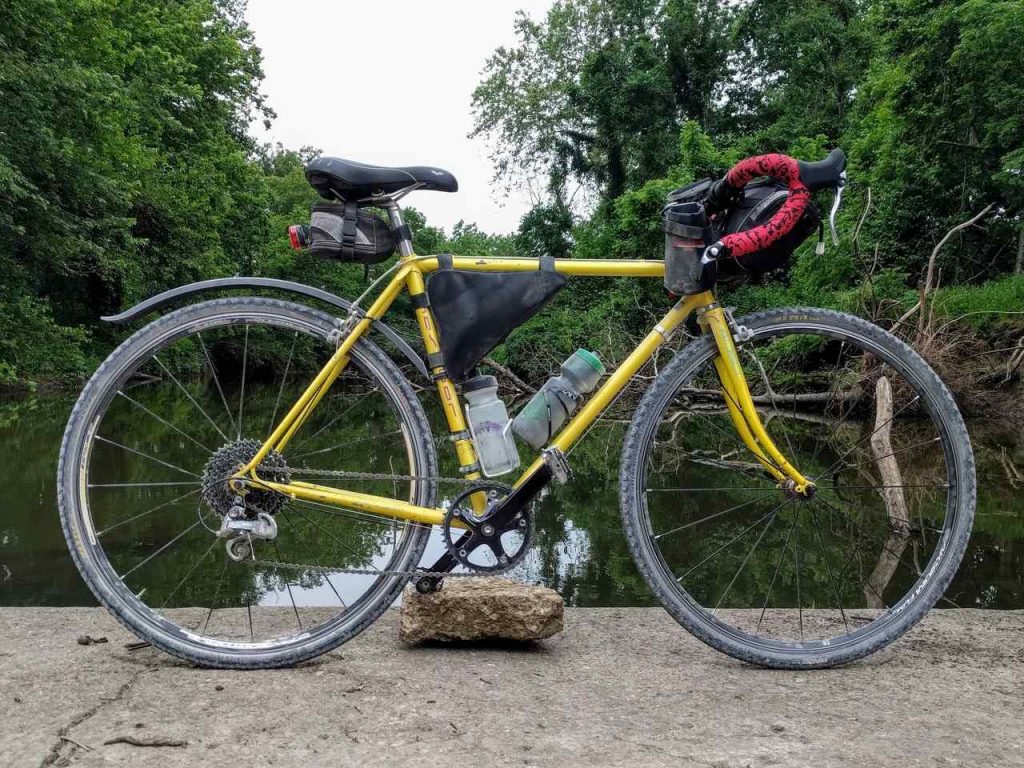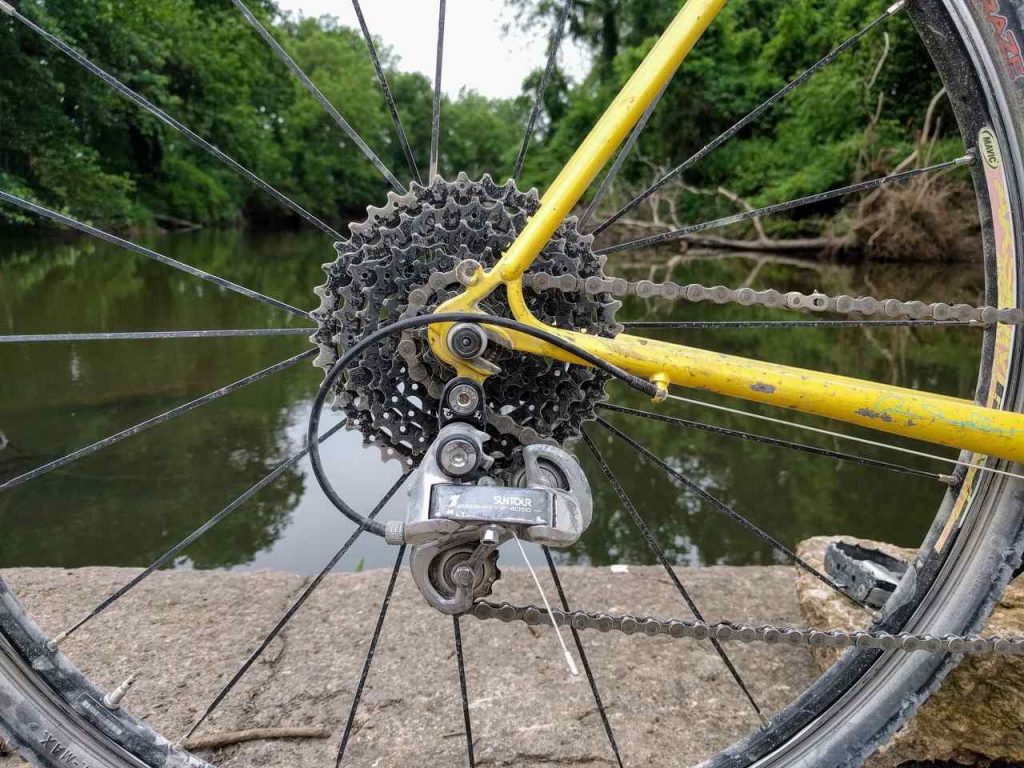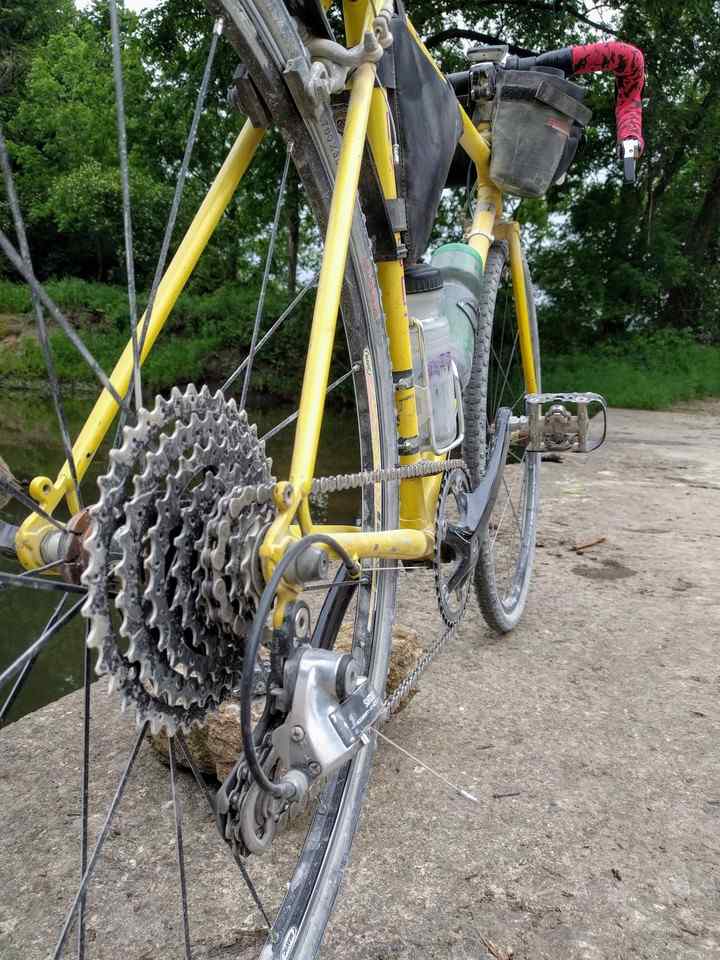Simplify: It’s a precept that works for a lot of things in life. Simpler is not always better, but it often is.
The same idea works for bicycle gearing. I couple years ago I got my first singlespeed road bike. Loved it. No gears to diddle with — just ride. I’ve also done some singlespeed mountain biking. That also worked well, at least on the trail. Getting to the trail was another matter, hence the existence of the “dinglespeed” concept.
My Nashbar Gravel Bike (a 1988 Nashbar 4050 steel road bike) came to me with 2×6 gearing. It worked. When I swapped over to a new wheelset, I upgraded to 2×8 gearing. With 38/52 cranks and an 11-30 cassette, I had a range of about 34 to 128 gear-inches. After riding that for awhile, I realized that I was almost never using the big ring. So why not simplify and go with a single chainring?
I’d drop a bit of weight: one shifter, one cable, one chainring, the front derailleur. Not significant, but not a bad thing, either.
So I’ve swapped the drivetrain over to a 1×8 setup.
At the same time, I wanted to change from the stock down-tube shifter to a bar-end shifter. I didn’t really mind the ergonomics of the down-tube shifters, but they interfered with the possibility of adding a frame bag.
For the bar-end shifter I went with a Sunrace SLR96. I chose the left, friction only, shifter, with the understanding that it could be used for either front or rear shifting. The price for a single SLR96 was about $30.
I also had to add a new cable stop for the downtube — I used an Origin8 single cable stop. I also needed a new shifter cable and housing. Since I was planning on friction shifting, it didn’t need to be a high-quality cable.
In addition, I took the opportunity to swap out the crank and bottom bracket. I had a spare set, left over from when I’d converted the Amok from 1×9 to 3×9 last year. The newer bottom bracket is sealed, vs. the loose ball bearings of the original, so that’s a small bonus. I also reused the chainkeeper (a Deda Dog Fang) from the Amok, in an effort to keep the chain from jumping off the chainring, at least on the inside.
For the gearing, I used a 42-tooth chainring up front, with a Sunrace CSM680 11-40 cassette. In addition, the big cassette required a Wolf Tooth RoadLink to lower the rear derailleur enough to accommodate the largest cogs.
With this setup, the Nashbar has a range of 28.5 to 103.7 gear inches. That’s a lower gear than I had previously, and nearly as tall at the top end. It should more than suffice for my typical riding.
Total cost of the conversion was about $85. That bought me simplicity, a bit of weight savings, slightly better ergonomics, and space to add a larger frame bag. Worth it? Well, who knows. It’s different, at least. I’ll run it awhile and see how it goes. Early returns are positive.


